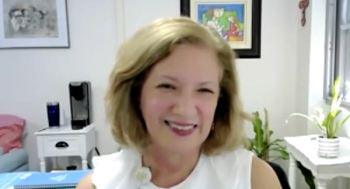
While Maria C. Velez, MD’s, term as president of ASPHO is only 1 year, she is already confident in ASPHO’s strategic plans.

Your AI-Trained Oncology Knowledge Connection!


While Maria C. Velez, MD’s, term as president of ASPHO is only 1 year, she is already confident in ASPHO’s strategic plans.
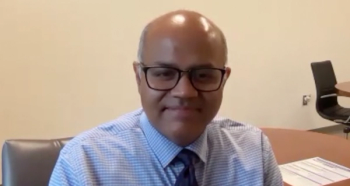
“This is something where this is written by the trainees, for the trainees, and, of course, for all the other clinicians who take care of patients,” said Kiran Turaga, MD, MPH.

An expert explains that real-world data from the REALiTEC study shows teclistamab remains highly effective in relapsed/refractory multiple myeloma—even among patients ineligible for clinical trials—demonstrating strong response rates, encouraging survival outcomes, and reinforcing the importance of therapy sequencing and broad access to bispecific antibodies in everyday clinical practice.
![“Everyone—patients, doctors—we all want the same thing. We want [patients] to live longer,” said Kiran Turaga, MD, MPH, on patients with peritoneal surface malignancies.](https://cdn.sanity.io/images/0vv8moc6/cancernetwork/9b290688648a249e516474c175a3c06309426d15-2950x1568.png?w=350&fit=crop&auto=format)
“Everyone—patients, doctors—we all want the same thing. We want [patients] to live longer,” said Kiran Turaga, MD, MPH, on patients with peritoneal surface malignancies.
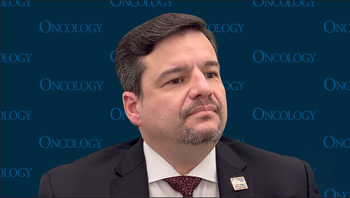
Data from the phase 3 DeLLphi-304 trial at ASCO 2025 revealed a survival advantage with tarlatamab vs chemotherapy in second-line ES-SCLC.
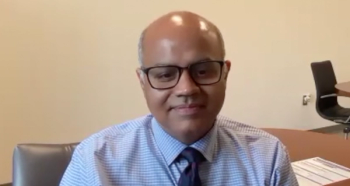
The new peritoneal surface malignancy care guidelines had clinicians gather from every disease state to show increased representation.

The FDA approval of tarlatamab in SCLC has received much press attention, according to Daniel R. Carrizosa, MD, MS.

These new guidelines aim to alleviate some of the problems caused by patients with peritoneal metastases being diagnosed with the disease in late stages.
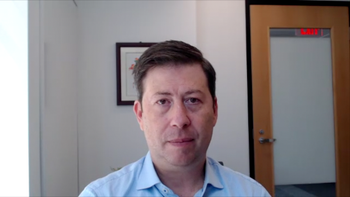
A combined cohort composed of patients from the TROPION-Lung01 and TROPION-Lung-05 trials showed a survival advantage with dato-DXd vs docetaxel.

The National ICE-T Conference may inspire future collaboration between community and academic oncologists in the management of different cancers.
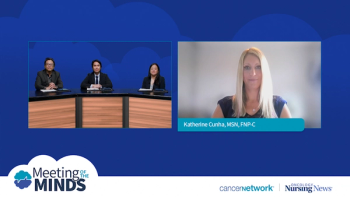
Panelists discuss how proactive monitoring for ALK inhibitor adverse effects through regular lipid panels, liver function tests, and patient education about red flag symptoms like bradycardia or cognitive changes enables early intervention and successful dose management.

This is an actor portrayal of a hypothetical patient profile developed for educational purposes based on characteristics of patients with multiple myeloma as seen in clinical practice. The hypothetical case was co-developed by staff medical writers with Cancer Network/ONN.”
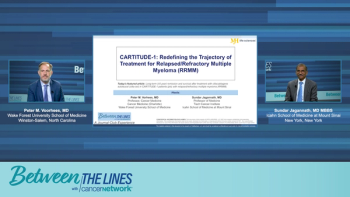
Panelists discuss how long-term CARTITUDE-1 data may change clinical practice by validating earlier use of ciltacabtagene autoleucel (cilta-cel) and informing personalized treatment strategies based on risk and disease biology.

Panelists discuss how they evaluate patients postsurgically by weighing factors like tumor location, extent of resection, patient age, and quality of life considerations to determine whether to pursue immediate treatment or surveillance, while emphasizing that microscopic disease always remains despite apparent gross total resection.
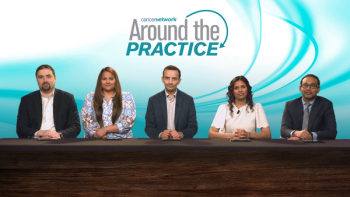
Panelists discuss how despite the significant progress with bispecifics in relapsed/refractory multiple myeloma (R/R MM), major unanswered questions remain including optimal sequencing strategies (which represent the biggest challenge), how to implement bispecifics earlier in the treatment paradigm, and how to integrate them with other existing therapies in the evolving treatment landscape.

Panelists discuss the importance of patient-centered communication in metastatic melanoma care, emphasizing how clinicians convey the trade-offs between rapid responses from targeted therapies and the durable, immune-driven benefits of immunotherapy, while guiding patients through realistic expectations, personalized goals, and the long-term potential of treatment.

Panelists discuss how optimal sequencing strategies suggest using chimeric antigen receptor (CAR) T-cell therapy first when eligible, followed by switching targets (from B-cell maturation antigen [BCMA] to GPRC5D) upon relapse rather than staying with the same target, while acknowledging that sequential bispecific use may be challenging due to T-cell exhaustion and recommending “sandwiching” T-cell sparing agents like cereblon E3 ligase modulators (CELMoDs) between bispecifics to allow T-cell recovery. However, they note that monthly dosing schedules and treatment holidays may change these dynamics in the future.

Osimertinib/chemotherapy and amivantamab/lazertinib have exhibited an efficacy advantage vs osimertinib in patients with EGFR-mutant NSCLC.

Panelists discuss how the durability of response and long-term minimal residual disease (MRD) negativity in a subset of patients supports redefining treatment end points and cure in multiple myeloma.

Panelists discuss how they perform comprehensive molecular testing using immunohistochemistry, FISH, and next-generation sequencing to identify IDH mutations and other critical markers like CDKN2A/2B loss that guide treatment decisions and tumor classification.

Panelists discuss how the unprecedented 5-year progression-free survival benefit (60% vs 8%) demonstrated in the CROWN trial supports starting with the most effective treatment (lorlatinib) upfront rather than sequential therapy approaches.

One of the largest obstacles to tackle in the kidney cancer landscape will be translating the research on rare kidney cancer subtypes into clinical trials.
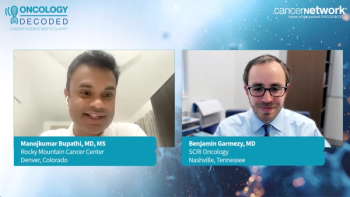
Manojkumar Bupathi, MD, MS, and Benjamin Garmezy, MD, focus on treatment options for patients with urothelial carcinoma.

Long-term toxicities like infections and secondary primary malignancies remain a concern when sequencing novel agents for those with multiple myeloma.

Zanzalitinib exhibited favorable data when evaluated alone or in combination with anti-PD-1 immune checkpoint inhibition in phase 1 RCC trials.
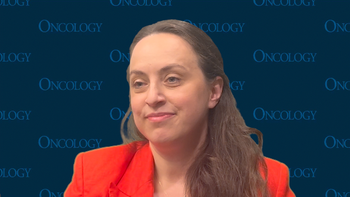
The investigational agent exhibited superior efficacy vs pembrolizumab in patients with lung cancer, suggesting potential efficacy in kidney cancer.

Management of adverse effects and access to cellular therapies among community oncologists represented key points of discussion in multiple myeloma.

Panelists discuss how a patient with multiple myeloma initially experienced severe fatigue, hair loss, swelling from kidney dysfunction, and overwhelming pain before being misdiagnosed with lupus, ultimately requiring emergency care where blood work and bone marrow biopsy confirmed both multiple myeloma and amyloidosis, leading to successful treatment with chemotherapy followed by stem cell transplant that achieved 5.5 years of remission monitored through regular blood draws tracking light chain levels.

Panelists discuss how multiple myeloma is a rare blood cancer affecting plasma cells that have gone rogue, causing symptoms like fatigue, kidney dysfunction, and bone pain, with approximately 36,000 new cases diagnosed annually in the US, primarily affecting older patients around 60 to 65 years of age. Although multiple myeloma is highly treatable with great therapy options available, the disease often relapses and requires aggressive early treatment approaches, including emerging immunotherapies that may help cure a larger fraction of patients in the future.
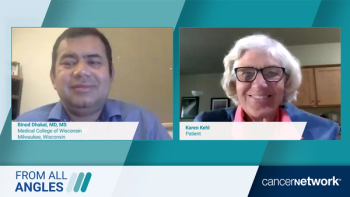
Panelists discuss how bispecific antibodies like talquetamab work through dual targeting mechanisms that bring T-cells and cancer cells together for tumor destruction, with patient Karen sharing her decision-making process based on treatment convenience, manageable adverse effects like taste loss and nail changes, and the therapy's effectiveness after initial severe reactions during step-up dosing.